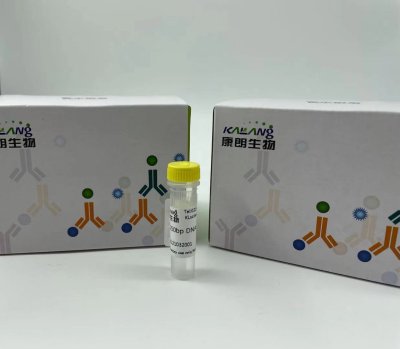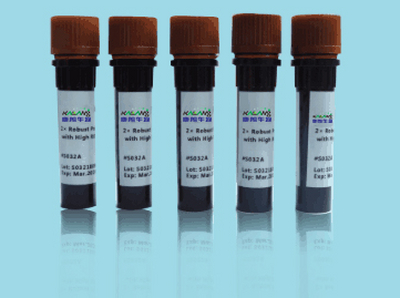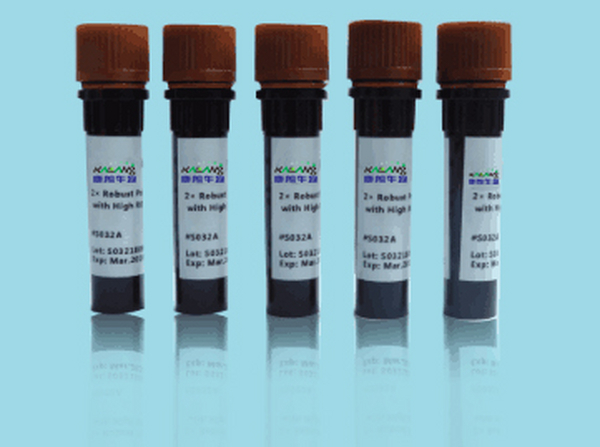QQ:3002763590


客服电话:021-61998208
ENaCδ rabbit Polyclonal Antibody
ENaCδ抗体
ENaCδ抗体应用:Western Blot: 1/500 - 1/2000. Immunofluorescence: 1/200 - 1/1000. ELISA: 1/20000. function:Sodium permeable non-voltage-sensitive ion channel inhibited by the diuretic amiloride. Mediates the electrodiffusion of the luminal sodium (and water, which follows osmotically) through the apical membrane of epithelial cells. Controls the reabsorption of sodium in kidney, colon, lung and sweat glands. Also plays a role in taste perception.,similarity:Belongs to the amiloride-sensitive sodium channel family.,subunit:Heterotetramer of two alpha, one beta and one gamma subunit. A delta subunit can replace the alpha subunit.,
ENC1 rabbit Polyclonal Antibody
ENC1抗体
ENC1抗体应用:WB 1:500-2000 This gene encodes a member of the kelch-related family of actin-binding proteins. The encoded protein plays a role in the oxidative stress response as a regulator of the transcription factor Nrf2, and expression of this gene may play a role in malignant transformation. Alternatively spliced transcript variants encoding multiple isoforms have been observed for this gene. [provided by RefSeq, Feb 2012],
Encephalopsin rabbit Polyclonal Antibody
Encephalopsin抗体
Encephalopsin抗体应用:Western Blot: 1/500 - 1/2000. Immunohistochemistry: 1/100 - 1/300. Immunofluorescence: 1/200 - 1/1000. ELISA: 1/5000. opsin 3(OPN3) Homo sapiens Opsins are members of the guanine nucleotide-binding protein (G protein)-coupled receptor superfamily. In addition to the visual opsins, mammals possess several photoreceptive non-visual opsins that are expressed in extraocular tissues. This gene, opsin 3, is strongly expressed in brain and testis and weakly expressed in liver, placenta, heart, lung, skeletal muscle, kidney, and pancreas. The gene may also be expressed in the retina. The protein has the canonical features of a photoreceptive opsin protein. [provided by RefSeq, Jul 2008],
Encephalopsin rabbit Polyclonal Antibody
Encephalopsin抗体
Encephalopsin抗体应用:Western Blot: 1/500 - 1/2000. Immunohistochemistry: 1/100 - 1/300. Immunofluorescence: 1/200 - 1/1000. ELISA: 1/10000. opsin 3(OPN3) Homo sapiens Opsins are members of the guanine nucleotide-binding protein (G protein)-coupled receptor superfamily. In addition to the visual opsins, mammals possess several photoreceptive non-visual opsins that are expressed in extraocular tissues. This gene, opsin 3, is strongly expressed in brain and testis and weakly expressed in liver, placenta, heart, lung, skeletal muscle, kidney, and pancreas. The gene may also be expressed in the retina. The protein has the canonical features of a photoreceptive opsin protein. [provided by RefSeq, Jul 2008],
Endo G-L1 rabbit Polyclonal Antibody
Endo G-L1抗体
Endo G-L1抗体应用:Western Blot: 1/500 - 1/2000. ELISA: 1/40000. exo/endonuclease G(EXOG) Homo sapiens This gene encodes an endo/exonuclease with 5'-3' exonuclease activity. The encoded enzyme catalyzes the hydrolysis of ester linkages at the 5' end of a nucleic acid chain. This enzyme is localized to the mitochondria and may play a role in programmed cell death. Alternatively spliced transcript variants have been described. A pseudogene exists on chromosome 18. [provided by RefSeq, Feb 2009],
Endo180 rabbit Polyclonal Antibody
Endo180抗体
Endo180抗体应用:Western Blot: 1/500 - 1/2000. IHC-p: 1/100-1/300. ELISA: 1/20000. mannose receptor C type 2(MRC2) Homo sapiens This gene encodes a member of the mannose receptor family of proteins that contain a fibronectin type II domain and multiple C-type lectin-like domains. The encoded protein plays a role in extracellular matrix remodeling by mediating the internalization and lysosomal degradation of collagen ligands. Expression of this gene may play a role in the tumorigenesis and metastasis of several malignancies including breast cancer, gliomas and metastatic bone disease. [provided by RefSeq, Feb 2012],
Endo180 rabbit Polyclonal Antibody
Endo180抗体
Endo180抗体应用:Western Blot: 1/500 - 1/2000. Immunohistochemistry: 1/100 - 1/300. Immunofluorescence: 1/200 - 1/1000. ELISA: 1/20000. mannose receptor C type 2(MRC2) Homo sapiens This gene encodes a member of the mannose receptor family of proteins that contain a fibronectin type II domain and multiple C-type lectin-like domains. The encoded protein plays a role in extracellular matrix remodeling by mediating the internalization and lysosomal degradation of collagen ligands. Expression of this gene may play a role in the tumorigenesis and metastasis of several malignancies including breast cancer, gliomas and metastatic bone disease. [provided by RefSeq, Feb 2012],
Endoglin rabbit Polyclonal Antibody
Endoglin抗体
Endoglin抗体应用:WB 1:500-2000,IHC-p 1:500-200, ELISA 1:10000-20000 endoglin(ENG) Homo sapiens This gene encodes a homodimeric transmembrane protein which is a major glycoprotein of the vascular endothelium. This protein is a component of the transforming growth factor beta receptor complex and it binds to the beta1 and beta3 peptides with high affinity. Mutations in this gene cause hereditary hemorrhagic telangiectasia, also known as Osler-Rendu-Weber syndrome 1, an autosomal dominant multisystemic vascular dysplasia. This gene may also be involved in preeclampsia and several types of cancer. Alternatively spliced transcript variants encoding different isoforms have been found for this gene. [provided by RefSeq, May 2013],
Endoglycan rabbit Polyclonal Antibody
Endoglycan抗体
Endoglycan抗体应用:Western Blot: 1/500 - 1/2000. ELISA: 1/10000. podocalyxin like 2(PODXL2) Homo sapiens This gene is a member of the CD34 family of cell surface transmembrane proteins, which are characterized by an N-terminal extracellular mucin domain, globular and stalk domains, a single pass transmembrane region, and a charged cytoplasmic tail. The encoded protein is a ligand for vascular selectins. [provided by RefSeq, Oct 2012],
Endomucin rabbit Polyclonal Antibody
Endomucin抗体
Endomucin抗体应用:Immunofluorescence: 1/200 - 1/1000. ELISA: 1/5000. endomucin(EMCN) Homo sapiens EMCN is a mucin-like sialoglycoprotein that interferes with the assembly of focal adhesion complexes and inhibits interaction between cells and the extracellular matrix (Kinoshita et al., 2001 [PubMed 11418125]).[supplied by OMIM, Mar 2008],
最新动态
-

Anti-GNGT1 KL20092-001(50ul)
2021-10-11 -

Anti-GNGT1 antibody(50ul) KL20093-001
2021-10-11 -

MUC5AC (PT2058) mouse Monoclonal Antibody
2021-01-06 -

mOrange mouse Monoclonal Antibody(Mix)
2021-01-05
热门标签
- Histone H3 rabbit Polyclonal Antibody Histone H3抗体
- EGFR rabbit Polyclonal Antibody EGFR抗体
- Cy3 Conjugated
- AbFluor™ 555 Conjugated
- AbFluor™ 680 Conjugated
- AbFluor™ 350 Conjugated
- AbFluor™ 647 Conjugated
- AbFluor™ 594 Conjugated
- AbFluor™ 405 Conjugated
- Cy5 Conjugated
- AbFluor™ 488 Conjugated
- Cyclophilin B抗体 Cyclophilin B Monoclonal Antibody(2B10)
- COX IV抗体 COX IV Monoclonal Antibody(6C8)
- PCNA抗体 PCNA Monoclonal Antibody(12D10)
- FAK rabbit Polyclonal Antibody FAK抗体
邮箱:3002763590@qq.com
电话:021-61998208

扫码关注微信公众号






